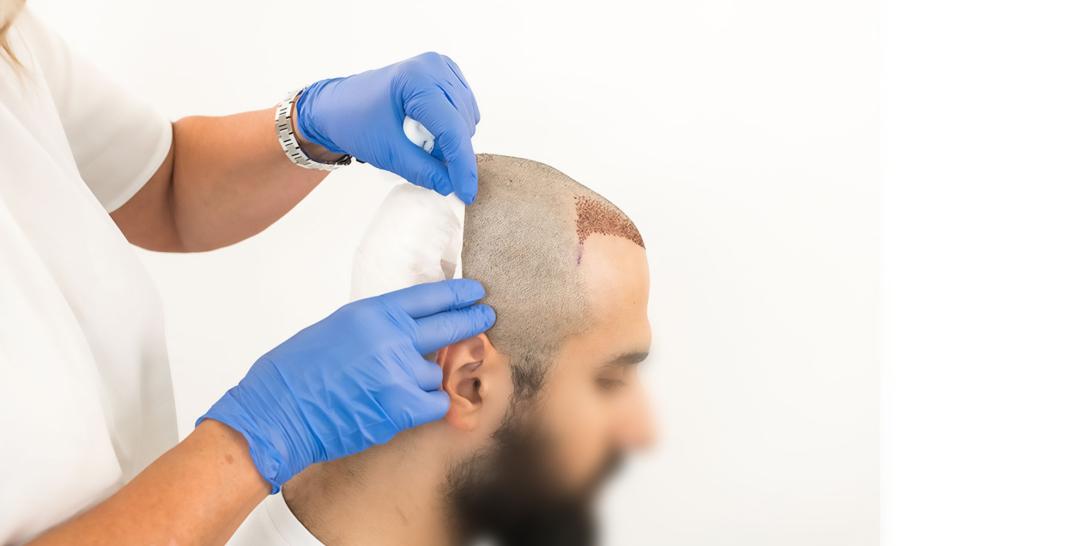
Undergoing hair transplant in Riyadh marks the beginning of a transformative journey, and understanding the post-operative phase is crucial for a smooth recovery and optimal results. While the procedure itself is a significant step, the weeks and months that follow play a vital role in determining the success of the transplant. Here's a comprehensive overview of what to expect after your hair transplant surgery in Riyadh.
Immediate Post-Operative Period (First Few Days):
Immediately after the procedure, you can expect some swelling and redness in the recipient and donor areas. This is a normal part of the healing process and will subside within a few days. You may also experience mild discomfort or pain, which can be managed with prescribed pain medication.
- Swelling: Swelling is most pronounced in the first three days and can extend to the forehead and around the eyes. Applying cold compresses can help reduce swelling.
- Redness: Redness in the recipient area is common and will gradually fade over the next few weeks.
- Discomfort: You may experience mild discomfort or a tight sensation in the scalp. Pain medication will be prescribed to alleviate this.
- Bandages and Dressings: The donor area may be covered with bandages or dressings, which should be changed according to the surgeon's instructions.
- Sleeping Position: You will be advised to sleep with your head elevated to minimize swelling.
First Week Post-Surgery:
During the first week, it's crucial to adhere to the surgeon's post-operative care instructions. This includes avoiding strenuous activities, keeping the scalp clean, and taking prescribed medications.
- Washing Hair: You will be instructed on how to gently wash your hair, typically using a mild shampoo. Avoid rubbing or scratching the scalp.
- Crusting and Scabbing: Small crusts or scabs will form around the transplanted grafts. Do not pick at them; they will fall off naturally.
- Avoiding Strenuous Activity: Avoid heavy lifting, exercise, and any activities that cause sweating, as this can disrupt the healing process.
- Medication: Continue taking prescribed medications, including pain relievers and antibiotics, as directed by the surgeon.
- Follow-up Appointment: You will have a follow-up appointment to monitor your healing progress and remove any sutures, if necessary.
Second to Fourth Week Post-Surgery:
In the second to fourth week, the transplanted hair will begin to shed, which is a normal part of the process known as "shock loss." This can be concerning, but it's temporary.
- Shock Loss: The transplanted hairs will shed, leaving the scalp looking thinner. This is a normal phase and indicates that the follicles are entering a resting phase before new growth.
- Healing of Donor Area: The donor area will continue to heal, and any remaining redness or swelling will subside.
- Returning to Normal Activities: You can gradually resume normal activities, but avoid direct sun exposure and swimming.
One to Three Months Post-Surgery:
During this period, new hair growth will begin to emerge. Patience is essential, as it takes time for the transplanted follicles to establish themselves.
- New Hair Growth: New hair will start to grow, appearing thin and fine initially.
- Continued Healing: The scalp will continue to heal, and any remaining redness or sensitivity will diminish.
- Follow-up Appointments: Regular follow-up appointments with the surgeon are crucial to monitor hair growth and address any concerns.
Three to Six Months Post-Surgery:
Significant hair growth will become noticeable during this phase, and the transplanted hair will begin to thicken.
- Increased Hair Density: The transplanted hair will grow longer and thicker, improving hair density.
- Natural Hairline: The hairline will begin to take shape, creating a more natural appearance.
- Continued Improvement: Hair growth will continue to improve, and the final results will gradually become more apparent.
Six to Twelve Months Post-Surgery:
By this time, you will see the final results of your hair transplant. The transplanted hair will have matured, and the scalp will have fully healed.
- Final Results: The transplanted hair will have reached its final density and thickness, providing a natural-looking hairline and improved hair coverage.
- Styling Hair: You can style your hair as desired, and the transplanted hair will blend seamlessly with your existing hair.
- Follow-up Appointment: A final follow-up appointment with the surgeon will assess the results and address any remaining concerns.
Long-Term Care:
Maintaining the results of your hair transplant requires ongoing care. This includes:
- Healthy Lifestyle: A balanced diet, regular exercise, and stress management can promote healthy hair growth.
- Scalp Care: Use gentle hair products and avoid harsh chemicals that can damage the transplanted hair.
- Follow-up Appointments: Attend regular follow-up appointments with your surgeon to monitor hair growth and address any concerns.
Riyadh's Post-Operative Care:
Clinics in Riyadh emphasize comprehensive post-operative care, providing detailed instructions and support to ensure optimal healing and results. They prioritize patient satisfaction and offer personalized care to address individual needs.
By understanding what to expect after your hair transplant surgery in Riyadh and following the surgeon's instructions, you can achieve a successful outcome and enjoy a natural-looking hairline.

